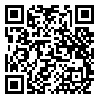Volume 2, Issue 3 (July 2018)
AOH 2018, 2(3): 170-177 |
Back to browse issues page
1- Faculty member, Department of Occupational Health Engineering, School of Public Health, Ahvaz JundiShapur University of Medical Sciences, Ahvaz, Iran
2- BSc, Department of Occupational Health Engineering, School of Public Health, Ahvaz JundiShapur University of Medical Sciences, Ahvaz, Iran
3- MSc, Department of Occupational Health Engineering, School of Public Health, Ahvaz JundiShapur University of Medical Sciences, Ahvaz, Iran , z.mosavianasl@gmail.com
4- Instructor, Department of Occupational Health Engineering, School of Health, Larestan University of Medical Sciences, Larestan, Iran
2- BSc, Department of Occupational Health Engineering, School of Public Health, Ahvaz JundiShapur University of Medical Sciences, Ahvaz, Iran
3- MSc, Department of Occupational Health Engineering, School of Public Health, Ahvaz JundiShapur University of Medical Sciences, Ahvaz, Iran , z.mosavianasl@gmail.com
4- Instructor, Department of Occupational Health Engineering, School of Health, Larestan University of Medical Sciences, Larestan, Iran
Abstract: (2421 Views)
Background: It is necessary to identify and determine the probability of human error in order to improve the level of health and safety of employees and reduce accidents. For this reason, this study was conducted to identify human error in the flour production process using the "Hazard and Operability” technique. Methods: Data collection was carried out through business case sheets and interviews with workers who have been involved in events as well as affected workers, and through the application of Human Hazop technique. Potential errors of people were predicted, analyzed and the controls were provided. Results: Human Hazop work-sheet analysis showed that the total number of human errors detected in the studied job tasks was 144, 75% of which were eliminated. The results of the study on the causes of the error show that the highest cause of the error is fatigue factor with 33.3%. Conclusion: With the precise application of the Hazard and Operability Method, possible types of operator errors and their consequences can be identified, and control paths to reduce human error can be provided. It canultimately create a safer environment and reduce the number of accidents.
Type of Study: Research |
Subject:
General
Received: 2018/07/11 | Accepted: 2018/07/11 | Published: 2018/07/11
Received: 2018/07/11 | Accepted: 2018/07/11 | Published: 2018/07/11
| Rights and permissions | |
 |
This work is licensed under a Creative Commons Attribution-NonCommercial 4.0 International License. |


